Panel Sessions
Day 1 Morning Theme: Why Are We All Here?
PANEL 1: WHAT ARE WE TALKING ABOUT?
There has been a lot of discussion and debate in the media, within our organizations, and among industry groups about equality, equity, racism, and diversity and inclusion over the past several years. Some examples of inequality and racism in our society are overt or obvious; others are not. The panel discussed these concepts and more to develop a shared understanding of the problem, related ideas, and definitions to form a baseline for the event dialogue.

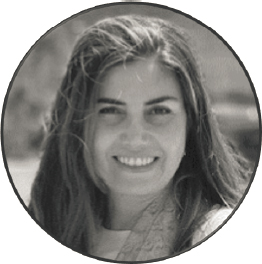
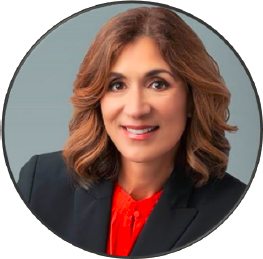
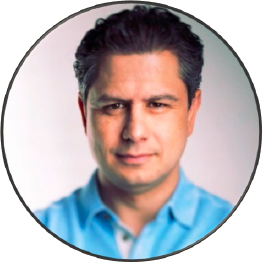
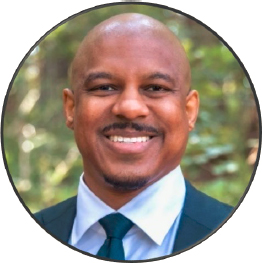
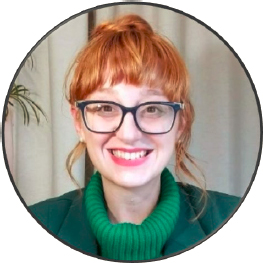
Speakers*
Shannon McLoughlin Morrison, The Ohio State University, Moderator
Olga Custodio, USAF (retired)/American Airlines (retired)
Tania Herrera, American Airlines
Jorge Roberts, Avports
Chris Musei-Sequeira, CJSC, LLC
Amber Woodburn McNair, The Ohio State University, Rapporteur
___________________
* Headshots, Row 1: Shannon McLoughlin Morrison; Row 2: Olga Custodio, Tania Herrera, Jorge Roberts; Row 3: Chris Musei-Sequeira; Amber Woodburn McNair.
Overview
The panelists shared their personal experiences, along with their views on how to have difficult conversations related to DEIJ topics, with a focus on the aviation industry.
Detailed Summary of Panel Discussion
As moderator, Shannon McLoughlin Morrison opened the panel session. She asked the panel members to introduce themselves and their current roles. After introductions, she asked the panelists how their opinions about inequality and equity have evolved over time.
Olga Custodio shared her challenges and experiences early in her career. She shared that no one looked like her, so it was difficult to find colleagues to look up to and receive mentoring from. Initially, she kept her head down, but her thoughts evolved throughout the years regarding the diversity and equity of the industry. Given that aviation is a male-dominated field, her experience as a Latina female was very challenging for her, but her confidence helped her through the challenges. Over time and with experience, she recognized that she belonged, which she reiterated to the audience as an important step in any career.
Custodio recounted a short, animated Disney film called Pearl. In the film, the character, Pearl, tried to assimilate and blend in and ignore who she was to fit in in a male-dominated office. When there was a new female employee, Pearl started treating the new female the way she was initially treated. She then had a change of heart and accepted the new person and went back to her true self.
Jorge Roberts shared that his mother was a dentist and was from Mexico. He stated that “no one believed that she was a dentist because she was Mexican.” His father is Caucasian, so he is Mexican and White. He stated that, at least once a week, he receives a comment that he does not look Latino. People judge the way he appears, and he was the subject of some prejudicial judgments from some colleagues who knew he was Mexican. In college, he got involved with minority student groups and learned how important education is. His opinion is that hearing individuals’ stories and talking to them about their experiences is more important than going to a seminar or receiving DEIJ training.
Roberts noted that programs that focus on developing those from historically marginalized communities who are students, women, or members of a minority group are beneficial and helpful. He recounted that he has progressed in his career because he took advantage of these programs. He is the first person on his father’s side to attend college. He reiterated that everyone needs to be empathetic—although someone might not be racially discriminated against, that person may be discriminated against in other ways.
Chris Musei-Sequeira shared a professional experience he found memorable. He recounted his experience on a project team that was completing an environmental document for entry of service of new aircraft operations for a large global logistics company at an airport west of the Mississippi River. The project was already planned and designed before the environmental document was to be completed. His team’s job was to complete the document, hold the public hearing, and get the project built. He went to the public meeting, where he found that the audience was made up of entirely “brown faces” and that he “was the only brown face on the project team.” Musei-Sequeira recounted that, for the most part, the people who spoke up in favor of the project were the minority of White people in the audience, who were also the city executives for a primarily Latino community.
Musei-Sequeira views this event through the lens of outcomes. He stated that he was not sure if this Insight Event was going to be focused on the internal workforce of the industry or the outcome—that is, the impact of aviation on communities. His opinion is that both the industry workforce and the impact of aviation on communities are part of the same issue, as was evident in the project he worked on. The way the project was designed impacted the outcome. There were spots for 90 people in the hearing room, and two overflow rooms were needed, with additional seats outside. In total, the audience was close to 400 people, while only 50 to 100 were expected. In Musei-Sequeira’s opinion, the project was very myopic. He was aware of conversation within the community that the project team was not involved and that community members were questioning the project and how it would benefit or impact the community. Musei-Sequeira reiterated the importance of being involved in conversations with community stakeholders, so that airport practitioners can understand the implications of impacts and intended outcomes.
Tania Herrera reiterated that it is also about understanding where other people come from. She observed that when she goes through security at some airports, it is very noticeable to her that the agents speak to her as if she does not know English. She said that sometimes the issue is about how people react. She shared that people should try to understand each other, where people come from, and how they interact. She is a Latina with a background in engineering who works in the aviation industry. She noted that “this conversation is needed. We need to make the world a better place by discussing these issues and how we treat each other.”
An audience member asked the panelists what the purpose of this event was and how it might advance equity—specifically, how the group can move the conversation beyond the audience that was in the room (who likely want to be involved) to people who do not want to be part of this type of conversation.
Musei-Sequeira stated that the purpose of the Insight Event was
to show me who my allies are. When I started my firm, I left [my prior company] so I could focus on equity. My prior company is a fantastic company, I just was not able to focus on the work that I wanted to do. The work I wanted to do is not what clients wanted to pay money for.
His projects are not $1 million projects. They are much smaller, but he is passionate about the work. He is interested in learning from colleagues at this event and determining who else is doing this type of work. He noted that people who are talking about these issues are not necessarily in the aviation industry and that he obtains many ideas from people outside the aviation industry. He said that, although the topic is not a new one, he appreciated that the group was having a conversation specific to aviation.
Roberts, the leader of a private company, shared that his company is often nimbler than its public-sector counterparts. He inquired whether Airport Concession Disadvantaged Business Enterprise (ACDBE) programs are working or are just in existence. He wants to ensure that airports and businesses are not just checking the box but are really looking at what is working, what is not, and how to create the right incentives. His company is not minority owned, but 40% of his staff are members of minority groups. He suggested that his company needs to do better with regard to hiring women, as only 20% of his staff are female. He wants to better understand what can be done to challenge the status quo. He believes the industry should be focused on creating equity and giving credit to firms that are doing the work, even if those firms are not minority owned. As a leader, he seeks to push the envelope and do more than just checking the box.
Custodio made the point that these issues exist not just within the industry but beyond it as well. She noted that when people talk about numbers or percentages, they are not talking about what diversity really looks like. It is not just about the number of women or members of a minority group on staff but how diversity really affects the bottom line. She noted that having a diverse team often results in better outcomes, and without diversity, the status quo will continue. The takeaways from events like these need to be shared within our organizations.
Herrera noted that companies are developing metrics to force organizations to be more diverse. She reiterated that
We don’t want to be the status quo. We don’t want to just check the box. We need to change, it is obvious. Personally, I am all for it, I am excited for change. I want to see other people motivated and wanting to achieve change.
Herrera stated that although organizations may sometimes struggle to meet the goals, the goals are just one tool for change. The motivation needs to be there for the right
reasons as well. Although metrics are helpful, conversations on how to change are also important.
McLoughlin Morrison addressed the following question to Amber Woodburn McNair: We are going to engage in challenging conversations over the next few days; what are some strategies we can use to engage in these conversations?
McNair stated that, in her professional experience, this event is one of the first opportunities she has had to move beyond an introductory 1-hour seminar on diversity. She noted that development of narratives can trigger social pain and may make people feel uncomfortable or disassociate. She suggested to audience members,
If you feel like you’re losing your capacity to be present, step out and come back when you are ready. That is a normal experience when reflecting on these topics. When we do this in my classes and with other faculty, we have a feeling that we are all here because we want to be and are all engaged but always keep in mind that we are not necessarily all in agreement in how to do better and where to go next. We should approach the conversation with compassion and curiosity and use it as a personal and professional opportunity for growth. To my White colleagues, sometimes in these conversations, we hear how some action has hurt someone, and we recognize that we may have done that to someone in the past. If you recognize yourself as someone who caused harm, take this opportunity to know better and do better. This is not the space to explain your intentions or focus on your own motivations and apologies.
Custodio agreed that some conversations are uncomfortable and asked the audience whether they choose to step away or engage? She noted that her decision often depends on the other person who is engaged and how open they are to the conversation. If they are truly open to the conversation, she always takes the time to have it, but if she feels that nothing is going to change, she chooses to walk away with the knowledge that that person needs to change.
Custodio noted that she sits on the boards of many organizations, one of which is called a fraternity (although they allow women members). She inquired to the organized whether they could remove the word “fraternity,” a process that took a long time. Some of the members were not in agreement and did not support the change. She noted that change requires a lot of energy and relates to the way people process information. She reiterated that these conversations could become teaching moments.
McLoughlin Morrison asked the panelists, “How do we keep moving forward and what does success look like?”
Musei-Sequeira noted that he does not necessarily have an answer; some of the indicators and metrics are lagging. He is interested in this topic and determining what metrics could be used to measure progress and identify future goals to set a direction.
Roberts agreed that it is difficult to improve or show improvements without common metrics. To determine progress requires additional conversations, such as this event; although they are uncomfortable conversations, they are necessary. He noted that metrics are risky due to the current litigious environment. He suggested that it is critical to have safe spaces for these conversations, and that, for managers, it is critical to ensure that these conversations occur. He suggested allowing people who are not facing systemic racial or gender discrimination, such as White colleagues and men, to participate in the conversation, so that the benefits could be explained to them as well. Both internal and external incentives are needed for meaningful conversations. A lot of changes are made by corporate America and are not dependent on policy. Roberts stated that he hoped that this event will move the needle on this topic. He noted that a lot of his colleagues, including members of minority groups and women, have been afraid to have these conversations because they had been so conditioned.
PANEL 2: PERSPECTIVES ON INEQUALITY
This panel provided perspectives and personal experiences with systemic inequality in our industry and how it has shaped the panelists’ outlook, career, and drive to seek improvements. The session provided event participants with real-life examples of how systemic inequality manifests and how we can all benefit from taking steps to address it.

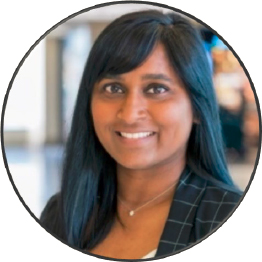
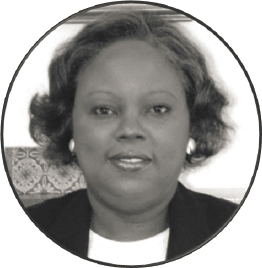
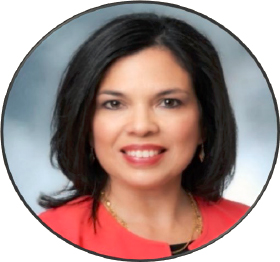
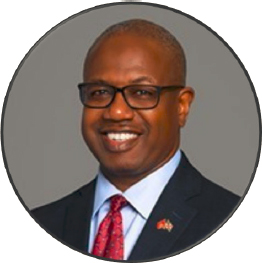
Speakers*
Eboni Wimbush, Airport Minority Advisory Council, Moderator
Api Appulingam, City of Philadelphia Division of Aviation
Dolores Rodgers, Houston Airport System (retired)
Yvette Rose, Cargo Airline Association
Ricky Smith, Baltimore/Washington International Thurgood Marshall Airport
Overview
This session explored the panelists views on following topics: personal experiences with bias and inequality in the workplace; barriers to creating a diverse, equitable, and inclusive aviation industry; and mistakes and solutions for organizations that are embracing DEIJ policies and practices.
___________________
* Headshots, Row 1: Eboni Wimbush; Row 2: Api Appulingam, Dolores Rodgers, Yvette Rose; Row 3: Ricky Smith.
Detailed Summary of Panel Discussion
Eboni Wimbush introduced the session, noting that understanding different perspectives is a key leadership skill. The goal of the panelists’ dialogue was to have each speaker provide some context on how they have seen inequality manifest.
Wimbush introduced the panelists and asked them to elaborate on personal experience in the workplace that shaped their career and outlook.
Api Appulingam joined the aviation industry in 2005 as an engineer and identifies as a millennial. When she entered the field, she said that “no one looked like me.” Now, she is “very passionate about speaking up and representing others who look like me and haven’t developed their voice yet.” Appulingam explained that she entered a workforce where her colleagues did not share important aspects of her identity (e.g., gender, race, religion, and culture). She had multiple experiences in higher education and in the workplace in which colleagues and superiors would not use her given name, made comments about the difficulty of pronouncing her name, or mispronounced her name time after time. She never saw similar treatment for colleagues with Western names—only for other immigrants and people of color. In her view, those individuals routinely stripped her identity for their own convenience. She found that she was better able to speak up and assert her own identity in the workplace after she had more experience standing up for others (especially for her son).
Dolores Rodgers reflected on her early experiences growing up in the historic Third Ward in Houston, Texas, a predominately African American community in the home state of Juneteenth. She noted that she attended the same high school as George Floyd. She saw inequality manifest in her education at an under-resourced school. At one point in her education, an educator told her she would never amount to anything. Rodgers persevered to earn bachelor’s and master’s degrees and entered the field of human resources (previously called personnel). At this stage, she continued to see inequality manifest. On her first day of work, she received a derogatory comment about her hair. She also noticed that the only people who had computers were the White employees. As she performed her human resources work, she was told, “I could be a star if I hired more White men on my staff.” Although that was her introduction to the aviation industry, she noted that
in my journey, I saw many POC [people of color] and women advance to be airport directors at other airports. So that gives me hope for things to change. I am involved in a lot of nonprofit organizations, and one thing a lot of people don’t recognize is that a lot of people can do these roles. But we have tunnel vision and look at whether people have right credentials and if they have industry experience. Those are impediments to people of color.
Ricky Smith shared that he grew up in Baltimore, Maryland, in an environment that was “110 percent Black.” Then, he attended Howard University, which was another “110
percent Black” environment. When he entered the workforce, he had to learn to transition to an environment that was “110 percent White.” In this workplace environment, it was important to him to see Black role models participating and leading in a White workforce. He mentioned some specific adversity in his career when he was discouraged from pursuing DEIJ while in leadership roles. Despite being told that it would tarnish his career if he focused on DEIJ in a senior position, Smith kept pursuing it.
Yvette Rose shared her experience as a first-generation immigrant in the United States. As a child, she felt pressure to assimilate and acculturate, which led to her feeling like she lost much of her own culture. This feeling continued into her adulthood when she entered the aviation workforce, which was primarily populated with White men. These cultural challenges affected her confidence and ability to speak out early in her career. She now values her role and volunteers with young people and in recruitment. She sees that each person might need different resources, opportunities, and connections, and she wants to figure out what can be done to bring in young diverse people to the field.
Wimbush next asked the panelists to describe what barriers still exist today to creating a diverse, equitable, and inclusive aviation industry.
Smith responded that he thinks a barrier is the number of White people who do not acknowledge or recognize their own head starts. He stated that more people need to understand the magnitude of the impacts of racial discrimination and inequality over the course of generations.
Appulingam summarized a few barriers. First, she identified the pattern of hesitation and waiting for the right time to intervene on equity issues. She thinks that this type of thinking stalls necessary actions to advance equity. Second, she identified the pattern of focusing on one thing at a time. While White women have made gains in career advancement in the aviation industry, other minority groups have not. She wants the industry to consider a broader equity lens that focuses on improving diversity and equity across the board and advances multiple diverse groups at once. Third, she highlighted the barriers associated with the model minority myth attached to Asian Americans. She noted that the data show that Asian Americans are the least likely to be promoted into management roles. Additionally, she pointed out the limitation of the Asian American monolith stereotype: “We [Asian Americans] are coined into one term and one stereotype, but our food, religion, language, culture is different across 50-plus nations. The Western world has grouped us into one stereotype.”
Lastly, Rodgers discussed the ways that the emotion of fear is present as a barrier. White men may be fearful of what could individually happen to them in response to DEIJ policies and practices. Further, when senior leadership manages the organization from a place of fear, it can lead to an attitude of “I will implement DEIJ programs because
someone is forcing me.” Rodgers thinks this approach diminishes the quality and impact of DEIJ interventions.
Wimbush asked the panelists to describe what specific biases they see today.
Rose expanded the conceptualization of the term “bias” and reframed the moderator’s question. She quoted a metaphor from Dr. Menah Pratt-Clark from Virginia Polytechnic Institute on how to differentiate diversity, inclusion, and belonging: diversity represents being invited to the dance, inclusion represents being asked to dance while you are attending the event and belonging represents dancing to the music that is representative of your heritage and culture.3 Rose noted that we can see bias manifest in who holds the power in planning the metaphorical dance.
Smith reiterated that, as more women and members of minority groups assume leadership roles (and can plan the dance), the data show that they are not replicating behavior that is exclusionary.
Wimbush asked the panelists for some examples of mistakes that organizations are making as they embrace DEIJ policies and practices.
Appulingam said that she thinks the “check-the-box” mentality is an example of an organization-level mistake because it lacks nuance and meaningful follow-up. There is a tendency to dedicate 1 hour at an annual conference or offer simplistic trainings that lack the nuance or acknowledgment of how experiences and challenges vary across different marginalized groups in aviation.
Smith expressed some frustration with the overuse of studies, councils, committees, task forces, and so forth. He thinks this approach overcomplicates DEIJ efforts and can get in the way of implementing meaningful actions. Smith gave a second example, observing that when organizations do pursue actions and conversations that advance women and members of minority groups in the workplace, he notices that someone tends to make a statement akin to “but make sure they are qualified.” He stated that if the playing field is leveled and the perceived or real barriers are removed, women and minority groups will win.
Wimbush then asked the panelists for some examples of solutions that they are bringing to their organizations.
___________________
3 Barone, C. Women in Aviation Address Diversity, Equity, and Inclusion from All Angles. Connected Aviation Today, March 15, 2022. https://connectedaviationtoday.com/women-aviation-address-diversity-equity-inclusion-all-angles/.
Rose highlighted an initiative called the Youth Access to American Jobs in Aviation Task Force.4 She is working with FAA to reach out to communities that cannot easily access aviation. Smith highlighted that his approach to leadership has been to set the expectation that everyone will have equal access to opportunity. He does not penalize employees who share something that is concerning about the organization, because he wants to foster a culture of growth. Rodgers highlighted her work to ensure that people of color are educated about opportunities to lead as primary contractors. Her focus is on networking and mentoring people of color. Appulingam shared that she is president-elect for the Philadelphia chapter of the Women’s Transportation Seminar (WTS) and active with their youth mentoring program, Transportation YOU.5
One audience member asked the panelists about FAA’s efforts to right the historical wrongs. This person wanted to know more about the strategy to develop equitable systems and programs. Smith responded that it is all about money and access to capital. He stated that it is his opinion that regulations are needed to provide access to opportunities and capital, so that minority-owned businesses can pursue opportunities as prime consultants.
Another audience member asked the panelists how prime consultants can manage the risks of smaller start-up entities owned by members of a minority group. Rodgers asserted that a large part of the problem with airport contracting is that the requests for proposals (RFPs) are designed in such a way that only a few large companies can qualify for the contracts. Appulingam acknowledged the challenges and shared that she has been part of efforts to create smaller “multiproject RFPs” that more diverse businesses can complete for. Smith encouraged women and minority-owned firms to team together.
In closing, Wimbush asked the audience to reflect on whether they were “checking the box,” whether they were placing unnecessary credentials on jobs or contracts, and whether they hold racial or ethnic biases regarding who belongs in certain careers.
___________________
4 FAA. Advisory and Rulemaking Committees: Youth Access to American Jobs in Aviation Task Force (YIATF). Federal Aviation Administration. 2022. https://www.faa.gov/regulations_policies/rulemaking/committees/documents/index.cfm/committee/browse/committeeID/797.
5 WTS. Philadelphia Chapter: Transportation YOU. Women’s Transportation Seminar, 2022. https://www.wtsinternational.org/chapters/philadelphia/student-outreach/transportation-you.
PANEL 3: RISK MANAGEMENT
In recent years, many organizations have developed programs and policies to combat systemic inequality, which can include efforts to promote equity, increase diversity, and ensure inclusion. However, the motivations for doing so and results vary. This discussion explored the corporate and organizational risks resulting from systemic inequality. Case studies and examples from within the airport industry and other industries were included.

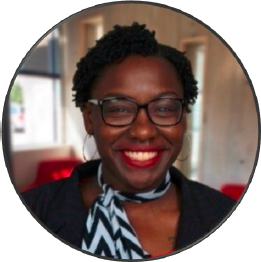
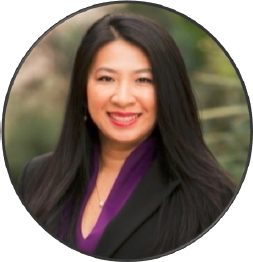
Speakers*
Monica Williams, The Equity Project, LLC, Moderator
Anita Cobb, Mead & Hunt
Yen Ling Shek, Russell Reynolds, LLC
Overview
This session explored the panelists’ views on the following topics: the importance of addressing systems of inequality; naming systems that were designed to be inequitable; and the risks associated with not doing DEIJ work.
Detailed Summary of Panel Discussion
Monica Williams opened the panel with an acknowledgment that people are working to dismantle, disrupt, and interrogate systems of oppression within aviation, but they are tasked with doing so from within the system itself. She asked the panelists to share why they think it is important to address systems of inequality.
Anita Cobb shared that her own career pathway in the airport planning profession illuminated the ways that systems of inequality manifest. In her early days as a temporary administrative assistant, she felt expendable, despite having the most degrees in her office. It solidified for her that she wanted to make the aviation industry “a place where everyone feels welcome and has their needs met.”
Yen Ling Shek shared that she thinks that, during and after the COVID-19 pandemic, we are entering a new era of workforce needs, and that workers have new ideas about
___________________
* Headshots, left to right: Monica Williams, Anita Cobb, Yen Ling Shek.
what work looks like. She believes these broader workforce shifts require more interrogation of existing systems.
Williams prefaced the next question by distinguishing between systematic inequities (the user follows a specific system to create inequities) and systemic inequities (inequitable processes and outcomes are broadly embedded throughout many systems). She asked the panelists to specifically name systems that were designed to be inequitable.
In response, Shek shared more on the workforce perspective. She stated that, after the murder of George Floyd, it became clear that people are not able to completely sever their personal life experiences from their work life experiences. She saw that, as people began to name systems of inequity more broadly in society, corporations and employers began to realize the depth of hurt, trauma, and pain that employees bring to the office every day. She thinks it is important to acknowledge and encourage people to come to work as their full selves.
Shek also provided an example that was focused on how RFPs and contracting systems are inequitable. She argued that open houses, networking, and training to create spaces for partnering would lead to an increase in supplier diversity because these activities would better prepare more people to navigate the system. Finally, Shek shared her thoughts on the inequities in conflict resolution when a minoritized individual is faced with harassment, hostile workplace behavior, or inappropriate comments. She thinks that existing conflict resolution systems tend to place more emphasis on protecting the feelings of the person who made the offensive comment than on protecting the feelings of those who were hurt. She argued that more equitable systems would recognize impact, not just intent.
Cobb shared her perspective that succession plans within the aviation industry are designed inequitably. She argued that the industry needs to improve outreach to disadvantaged communities and enhance their access to resources to pursue these careers. She believes this will lead to a more diverse group of individuals entering the workforce and could combat patterns of tokenism that she sees in the aviation industry.
Williams transitioned to a conversation of the risks associated with not doing DEIJ work. Her view is that the risk of not doing the work is that the system will continue to perpetuate harmful and racist processes and outcomes. Her opinion is that the system was designed to be exclusive, and not everyone has the ability to leave and find a new position if they encounter these harms.
Shek shared that there is an aspect of fear related to the threat of litigation if the DEIJ work is not done. However, she thinks that DEIJ work is better served when the motivation for it is rooted in building a sense of shared dignity on the team. Shek also addressed the risk associated with selecting a random person to lead DEIJ efforts just
because they happen to be a member of a minority group. She argued that, if leadership fails to select someone who has the resources and training to lead DEIJ work, then they risk not actually addressing the DEIJ needs within the organization.
Cobb identified the risk of alienating the incoming generation from the workforce if aviation industry organizations do not pursue DEIJ work. She shared that studies have shown that younger generations want to work for purpose-driven organizations.
At the close of the session, Williams focused on the need to persuade organizations that DEIJ is good for the bottom line. Shek agreed that it is important to be well-versed in both the business case and the moral case for DEIJ efforts, in order to persuade a variety of individuals in different parts of the organization. Finally, Shek argued to lead with a DEIJ vision (not simply a risk management approach) since that will “give people something to run toward rather than run away from.”
Day 1 Afternoon Theme: Why Should We Care?
PANEL 4: ECONOMIC IMPACTS OF SYSTEMIC INEQUALITY
This panel explored the economic and financial impacts of systemic inequality on airports and other organizations, including workforce, passenger revenue, and development, and the benefits of addressing these challenges through enterprise-wide DEIJ programs and other approaches.

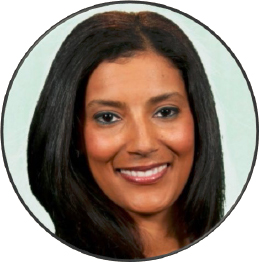
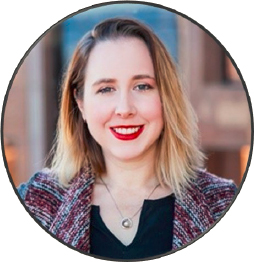
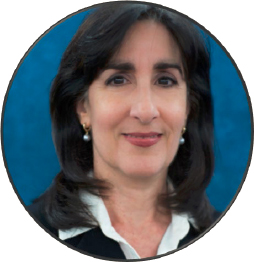
Speakers*
Cathryn Stephens, Eugene Airport, Moderator
Heather Barry, SSP America
Breann Preston, Port of Portland
Ani Turner, Altarum
Overview
This session explored the panelists’ views on the following topics: broader economic arguments for racial equity, DEIJ practices in securing a diverse job applicant pool, and airport contracting and procurement.
Detailed Summary of Panel Discussion
Ani Turner shared that there is an established methodology for considering the economic burden of health disparities (e.g., with respect to obesity and diabetes). She thinks there is an economic argument to address racial disparities—racial inequity impacts the fiscal environment and economic growth. She thinks it is important to ask what types of resource distributions would be expected in an equitable society. She provided the example that children who are born into neighborhoods of concentrated poverty experience differences in opportunities and life outcomes. Decades of housing
___________________
* Headshots, Row 1: Cathryn Stephens; Row 2: Heather Barry, Breann Preston, Ani Turner.
and education policy have led to these disparities. Currently, nearly one-third of Black children and Native American children live in places of concentrated poverty. For Hispanic and White children, the figures are 25% and 5%, respectively. This affects earnings, health outcomes, and incarceration rates.
Turner also highlighted racial disparities in income. This issue is particularly significant, since most of the working age population will soon be people of color. By 2050, the order of magnitude difference in the racial earnings gap will be in the trillions of dollars. When national economic growth in the United States from 1960 to 2010 is considered, the gross domestic product (GDP) per capita grew by a factor of 2.5, with up to one-quarter of that growth attributed to expanded opportunities for women and Black persons.
Breann Preston added that systemic inequality is persistent; the wealth gap between White and Black families is 13 to 1. The gap has persisted despite economic and job growth.
Heather Barry added that incorporating research and data will move us forward; there are extreme inequalities related to members of racial minority groups in the aviation workforce. Only a handful of Black professionals leads major airports. While the portion of the airport that manages the workforce is often more diverse, there is a persistent lack of diversity within the portion of the airport that manages the large, business-oriented components of the airport. Barry stated that diversifying the business side of the airport is a key challenge. She agreed that dividing RFPs into smaller projects is a good step but asserted that there are many other small business challenges for minority business owners (e.g., accessing insurance and capital).
Cathryn Stephens shared her own experience related to challenges with hiring practices and securing a diverse applicant pool. She has had to re-review the applicant pool to ensure that qualified minority applicants actually advance to the next stage of consideration. She asked the panelists to share their thoughts on managing the hiring process to improve diversity. Barry asserted the impact of mayors and airport directors who create a workplace culture that values DEIJ in the hiring process. She believes that creating a culture of diversity starts with the top and putting the right people into power. Turner recommended a strategy of iterative evaluation and adjustment to ensure that the organization is not perpetuating exclusive practices. Preston asserted the importance of data monitoring as a strategy to hold the people within the organization accountable, although Barry followed up with an acknowledgment that it can be challenging to obtain accurate data inside a toxic workplace.
Stephens transitioned the conversation to DEIJ practices in airport contracting and procurement. Preston stated that the traditional pay schedule within existing RFPs is often financially harmful to smaller businesses and start-ups. The payment delays are challenging for small businesses to carry, so they are dissuaded from applying for
airport contracts. She also named two challenges related to the certification process for minority-owned businesses. First, in order to be considered a business, applicants must demonstrate 3 years of revenue. It can be challenging to reach the 3-year mark. Second, there is not always reciprocity between states to certify diverse businesses, so certification can be quite challenging to maintain. Barry agreed that certification for diverse businesses is a major burden that is not shared by large corporations.
Next, Stephens reflected on the growth in GDP and asked the panelists to reflect on whether the broader economic argument for racial equity pertained to “growing the pie” or “reconsidering how to divvy up access to the same pie.” Turner and Preston had slightly different perspectives on this question. They agreed that most, if not all, economic growth has been recovered by a small percentage of the wealthiest individuals. Preston argued that “growing the pie” ignores the inequitable power dynamics, so she is more in favor of framing equity as “redistributing the pie.” In contrast, Turner was in favor of framing equity as a strategy to drive overall economic growth.
An audience member asked the panelists to share their observations of powerful entities that may prefer the processes to be difficult, with intentionally designed obstacles to avoid redistribution of economic resources. For example, there are some who think assistance from the Supplemental Nutrition Assistance Program (commonly called food stamps) should have an element of difficulty, shame, and public humiliation. Turner recommended expanding the dialogue of economic distribution to recognizing the long-term impacts to the workforce pool and potential customers. Barry recommended focusing on the role of federal and public financing in airport infrastructure, which involves various federal statutes that prioritize DEIJ as part of conducting business. Preston reflected on the difference between the power of institutions and power of people within the institutions, emphasizing that people in leadership are in the position to meaningfully change the institution.
An audience member asked the panelists to identify what they think are the most significant barriers to pursuing contracted work at airports. Turner shared that sometimes the list of expected qualifications are signals that amount to “turf protection” and not necessarily true requirements. Preston shared that she would like to see government entities adapt to become more risk tolerant in matters related to DEIJ in the procurement process (but not more risk tolerant in safety matters). Barry shared that she thinks the industry needs to “create a garden of companies that want to [compete for airport work] and learn what their challenges are.” She recommended greater support for advocates working for an inclusive, engaging, and ready workforce.
PANEL 5: SOCIAL AND MORAL IMPACTS OF SYSTEMIC INEQUALITY
This panel explored the social and moral impacts of historical systemic inequality within the airport industry. The panel considered how airport development has impacted surrounding communities, which are often economically and socially disadvantaged, and how airports are addressing equity and engaging stakeholders in a more meaningful manner to achieve planning goals in the planning process.

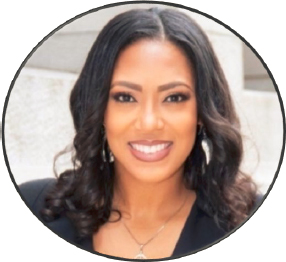
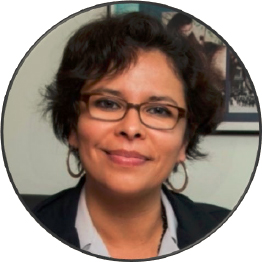
Speakers*
Erin Locklear, Raleigh–Durham Airport Authority, Moderator
Tammera Holmes, Aerostar Avion Institute
Rocio Saenz, SEIU
Overview
This session explored the panelists’ views on the following topics: the power of maps to create an “othering” mentality, labor casting, inclusive representation in decision-making, new mobility paradigms, and airport accessibility.
Detailed Summary of Panel Discussion
Erin Locklear introduced herself as part of the Lumbee tribe. Locklear acknowledged that there is substantial information that demonstrates the financial return on DEIJ, but that the social and moral returns on DEIJ have an additionally important place in the dialogue.
Rocio Saenz introduced herself as a representative of 36,000 airport workers, most of whom are contracted employees, at 24 different airports around the country. The union members are the people at the airport curb, the people who handle baggage, security officers, aircraft cabin cleaners, and wheelchair attendants. The people in these roles are largely people of color, women, and immigrants. They do this work without a living wage, and, in many cases, they do not have paid sick days or health insurance. Most of the union members work for contractors hired by the airlines, which have increasingly
___________________
* Headshots, left to right: Erin Locklear, Tammera Holmes, Rocio Saenz.
outsourced these jobs. In 1991, 6% of these jobs in air transportation were outsourced; today, it is near 35%. Contracted workers make 40% less than noncontracted workers in aviation, and they frequently need to work two to three jobs to earn enough money to afford survival basics. Two weeks ago, Saenz joined a group of airport workers protesting outside American Airlines headquarters and asked the chief executive officer to sign a pledge for good jobs. She stated, “These people are demanding—protect us, respect us, and pay us.”
Tammera Holmes shared her trajectory from airport planner to an advocate for and creator of aviation education programs. Holmes said that it was a “lonely journey being the only,” so she founded a company designing aviation education programs that “she wishes she had access to.”
Locklear transitioned to the next topic with a reflection on her visit to the Afro-Atlantic Histories exhibit at the National Gallery of Art in Washington, DC. The exhibit demonstrated the power of maps, drawings, and paintings to create an “othering” mentality. Locklear then invited Holmes to share her thoughts on other intangible borders and boundaries created by corporate and government documents. Holmes described the coloring of land masses for the redistribution of wealth and power in the United States, spanning colonies, territories, and states. As described in the book The Color of Law,6 these boundaries were drawn to guide the housing and labor market using a strategy now referred to as “redlining.” Additionally, housing vouchers were available for people to be able to live close to where they worked, but those vouchers were not provided to people of color. The socioeconomic impacts of redlining and eminent domain practices are far reaching. Holmes argued that housing and land are assets stolen from African Americans, who lost generational wealth. This lack of wealth is linked to property taxes, which often directly fund schools and help people matriculate through society and access quality jobs. Holmes asserted that there is some doubt about the quality of the aviation industry jobs available to minority communities. She noted the phenomenon of “labor casting,” the hiring of people in roles that adhere to the stereotypes that have been propagated for generations by the dominant culture. For example, immigrants and Black persons serve in more subservient workforce roles at the airport. She argued that this provides a false sense of upward mobility.
Locklear asked the panelists to share their thoughts on the concept of having a seat at the table, a metaphor that is frequently used in DEIJ dialogue to signal more inclusive representation in decision-making. Saenz stated that every single dollar that comes from public funds should benefit the public good and that the workers who are central to operations at public airports should be at this table. Holmes reflected on her observations of the attitudes of White men who frequently are already at the table. The “table” insinuates power, with White males as the power holders. She has heard many
___________________
6 Rothstein, R. The Color of Law: A Forgotten History of How Our Government Segregated America. Liveright, New York, 2018.
comments from White men that suggest they may feel attacked or may feel a sense of uselessness when DEIJ topics are mentioned. She argued that she would not be here without advocacy from White men who vouched for her throughout her career, so she would like for them to remain active in their advocacy while at the table.
Locklear asked the panelists how they incorporate equity work into their everyday work. Holmes described her intentional choice to leave corporate America because she no longer believed the “table-holders” would ever allow her to thrive. She said it was exhausting for her to try to convince people that DEIJ work was necessary, so she chose to lead her own grassroots initiative to create a sustainable cultural shift within the younger generations. In her role, she still feels that she sometimes needs to explain her double-minority identity, but she makes it a priority to find common ground, since the industry is so small. Saenz shared that her passion for ending poverty wages, creating equality in the airport workforce, and supporting labor unions is driven by the personal stories she hears from airport workers. She believes that change involves coming together as workers to influence decision-makers. She shared the example of an airport worker who has worked for 40 years as a baggage handler and wheelchair attendant and is still only earning $8 per hour. She believes every worker should be able to have a good job that can provide for themselves, their families, and their communities.
An audience member asked the panelists for their reflections on the future of aviation, particularly with respect to equity concerns regarding emerging technologies such as urban air mobility. Holmes’ response focused on advanced air mobility and urban air mobility. She thinks that emerging technology industries should look to models in other fields for improving workforce diversity and increasing the pool of qualified skilled workers, for example, the school-to-work pipeline that was created for coding jobs, in which coding skills are taught in schools and graduates can find entry-level work right out of school. Amazon also has a strategic plan to increase entry-level jobs for young people in which there are opportunities for advancement. In her view, even if drones can solve urgent social issues, it is important that the new mobility constructs involve enhanced opportunities for entry-level workers. Saenz reiterated that she thinks raising wages and creating good jobs for thousands of airport workers now will have positive effects for the whole community and jobs in emerging mobility industries.
An audience member shared a land acknowledgment statement7 and asked the panelists how Justice40 connects to the fact that many people do not have access to travel in the airports. Saenz shared how airport workers are frequently in the group that does not have access to air travel. When basic human necessities and living wages are
___________________
7 Land acknowledgment is defined by Northwestern University as “a formal statement that recognizes and respects Indigenous Peoples as traditional stewards of this land and the enduring relationship that exists between Indigenous Peoples and their traditional territories.” More information is available at https://www.northwestern.edu/native-american-and-indigenous-peoples/about/Land%20Acknowledgement.html.
lacking for thousands of airport workers, those individuals do not have the economic resources to live a full life that includes air travel for a family vacation. Holmes shared that one of the advantages of working for an airline is the increased access to air travel, so this is a fact she often shares as part of her diversity recruitment strategy. Locklear acknowledged there is a connection to Justice40 and recommended critically evaluating why certain decisions are made about the distribution of resources to certain airports: “Where do we allow our resources to go? Are we listening to folks with the most political power when we decide how resources are allocated? Who aren’t we prioritizing?”
Day 2 Theme: What Are We Going to Do About It?
PANEL 6: SYSTEMIC INEQUALITY WITHIN THE CONTEXT OF DIVERSITY, EQUITY, AND INCLUSION
This panel discussed the efforts to implement DEIJ initiatives, challenges, risks, and lessons learned. Why are companies making the investment? What are some basic principles of a successful DEIJ effort?

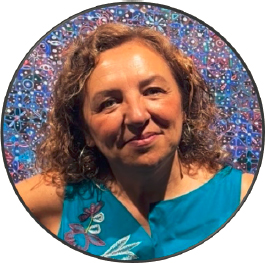
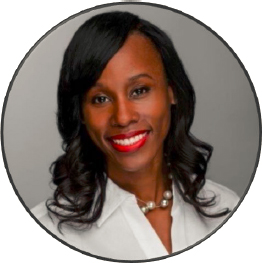
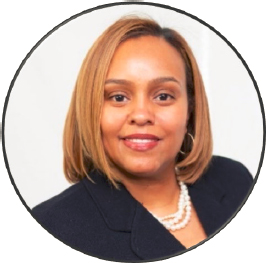
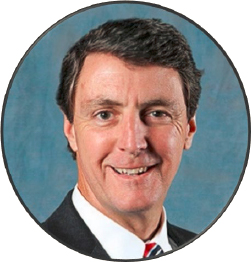
Speakers*
Denise Bailey, Milligan & Company, Moderator
Bookda Gheisar, Port of Seattle
Kelli Kelly, Kiewit
Tanisha Lewis, Metropolitan Washington Airports Authority
Steve Pelham, Jacobs Engineering Group
Overview
This session explored the panelists’ views on the following topics: changes to DEIJ offices before and after the summer 2020 protests for racial justice, conveying the
___________________
* Headshots, Row 1: Denise Bailey; Row 2: Bookda Gheisar, Kelli Kelly, Tanisha Lewis; Row 3: Steve Pelham.
seriousness of DEIJ work, integration of DEIJ advocates at executive levels in the organization, and assimilation culture.
Detailed Summary of Panel Discussion
Denise Bailey asked the panelists to reflect on what DEIJ was like in their organization in 2019, prior to the national racial justice protests in 2020, and how awareness has changed since that shift.
Tanisha Lewis shared that, in 2021, the Metropolitan Washington Airports Authority established the Office of Diversity, Inclusion and Social Impact that she leads. The organization reorganized to allocate resources to a new department and invest in this work. She encouraged her organization to directly address employees on the topic of DEIJ after the 2020 protests and shift diversity to an everyday conversation. They employed a third-party DEIJ contractor to complete an engagement survey and serve as an impartial voice to help push the strategy forward through difficult conversations among employees. The use of data and facts was also important.
Bookda Gheisar shared that she joined the Port of Seattle in June 2019 to serve as senior director of the Office of Equity, Diversity and Inclusion, which was preceded by the Office of Social Responsibility. After the COVID-19 pandemic and the George Floyd protests, the leadership became more amenable to looking at systemic racial inequities. She serves as one of 12 executive team members at the port. She also noted a demographic shift after three new young commissioners were voted into the Seattle Port Commission over the past few years, which has had an effect on DEIJ perspectives in leadership.8
Steve Pelham shared that his organization offered “places of comfort” in 2019 that were intended for employees to facilitate informal discussions about their career experiences. There were eight different affinity groups to represent different demographics. Although he considered this a more advanced effort than what was available in peer organizations at the time, he thinks it still reflected a “check-the-box” mentality.
Kelli Kelly shared that before 2019, her organization was focused on diversity. She was glad to see social justice brought into the conversation because it helped reinforce the narrative that DEIJ work affords minority-owned firms opportunities that they are entitled to, which is notably different from views of DEIJ work as being a charitable action. She felt that when DEIJ work is considered as social justice, it results in better industry partnerships than when DEIJ work is considered a charitable action.”
___________________
8 Sam Cho, Toshiko Grace Hasegawa, and Hamdi Mohamed were elected to the Seattle Port Commission in the past few years (Cho in December 2019, Hasegawa in November 2021, and Mohamed in January 2022). Learn more about the commissioners at https://www.portseattle.org/about/commission.
Bailey shared her opinion that the terminology used to convey regulations diminishes the seriousness that the regulations warrant. For example, the Buy America Law (or Regulation) is not commonly referred to as the “Buy America Program.”9 In contrast, support systems for a Disadvantaged Business Enterprise (DBE) are commonly referred to as DBE “programs” instead of DBE “regulations.” She argued that the term “program” connotes being charitable and optional. Building on this topic, Lewis shared that external consulting firms help to convey the seriousness and importance of DEIJ work within the airport environment. Consultants can be the impartial voice that supports the message and strategy of DEIJ advocates inside the airport. There can be challenges even when DEIJ advocates are brought into upper management positions. For example, Gheisar shared that she was drawn to apply for her current position because she saw that equity was horizontally integrated across the executive leadership. However, she had to advocate for herself to be included in certain executive meetings. Gheisar argued that she thinks DEIJ work should center anti-Black racism and indigenous experiences, since they are left the furthest behind.
Bailey asked the panelists to reflect on how their leadership responds to the more action-oriented mindsets of DEIJ advocates. Pelham affirmed that he wants to see leaders who are comfortable and interested in having one-on-one DEIJ conversations. He thinks leaders should want to see DEIJ “in the cake batter, not in the icing” of the organization. Kelly said that her organization has a commitment from leadership in the form of a committee on diversity, equity, and inclusion (DEI). She would like to see more direct conversations about social justice and systemic racism.10
Panelists Kelly, Gheisar, and Lewis talked about aspects of assimilation culture, particularly related to language, accents, vocational training, religious practice, and mobility. In a meritocracy, those who do the best get the best opportunities, but many people experience barriers to accessing the necessary networks.
An audience member asked the panelists to describe their engagement with communities near airports. Lewis shared examples of workforce recruitment initiatives with Historically Black Colleges and Universities and high schools. The goal is to demonstrate that aviation is not just limited to pilots and ticket agents. The current professional development program hires new college graduates and prepares them for a permanent position that they are placed in noncompetitively. The program is currently 50% diverse in terms of gender and race. Lewis also works with small businesses to train them on how to compete for contracts. Next, Gheisar shared the Port of Seattle’s connection to the Duwamesh Tribe, who lost their sovereign status under the George
___________________
9 More details on FAA’s guidance pertaining to Buy America legislation is available at https://www.faa.gov/airports/aip/buy_american/.
10 Kelly shared a new idea for a metaphor to try to convey the idea of justice: diversity represents being invited to dinner, inclusion represents getting a say in the restaurant, equity represents receiving the place setting and the seat at the table, but justice represents your larger affiliation with the restaurant (Do I have a ride to access it? Can I afford the menu?).
W. Bush administration. The Port owns 24 parks along the river and worked with the Duwamesh Tribe to name parks after tribal leaders.11 Now they are working on creating a decision-making framework for how the parks can be used to build a tool kit for sharing the land.
___________________
11 Port of Seattle. Port Announces New Names for Six Parks along the Duwamish River. October 27, 2020. https://www.portseattle.org/news/port-announces-new-names-six-parks-along-duwamish-river.
PANEL 7: BUILD A TOOLKIT
This panel discussed specific strategies, actions, and initiatives to help airports successfully address systemic racism through an effective DEIJ program.

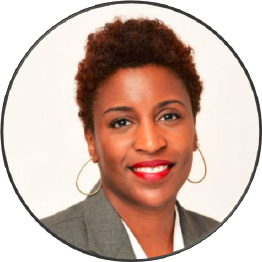
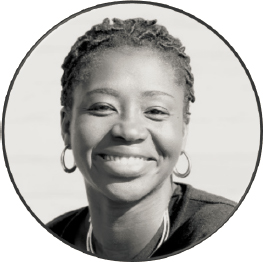
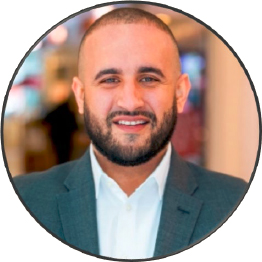
Speakers*
Denise Bailey, Milligan & Company, Moderator
Thiane Carter, Raleigh–Durham Airport Authority
Toyin Ogunfolaju, Jacobs Engineering Group
Jonathan Todd, Philadelphia International Airport and Northeast Philadelphia Airport
Overview
This session explored the panelists’ views on the following topics: DEIJ action items on their immediate radar, sharing data and establishing metrics, the most difficult barriers to break down in their organization, and strategies to help prevent individual burnout.
Detailed Summary of Panel Discussion
Denise Bailey asked the panelists to share how they consider the variety of stakeholders in the aviation industry (e.g., the flying public, airport-adjacent communities, and the workforce) and how they incorporate them into their DEIJ work.
Jonathan Todd shared that his organization aims to furnish a variety of entry points for providing comments and feedback so that people feel comfortable (e.g., an anonymous hotline, email address, digital town halls, and in-person town halls). They want to create a place of understanding to encourage attendance, listening, and sharing. This helps to obtain input from their workforce and assess whether the organization’s priorities are aligning with stakeholder expectations for DEIJ outcomes. However, these forums also become pathways to understanding resistance to DEIJ topics, since some people do
___________________
* Headshots, Row 1: Denise Bailey; Row 2: Thiane Carter, Toyin Ogunfolaju, Jonathan Todd.
not think DEIJ is appropriate for the workplace and do not want to see resources invested in DEIJ. At Todd’s organization, the leadership created a Racial Equity Advisory Council as well.
Thiane Carter explained that her airport’s chief executive officer hired a consultant to obtain data and input from employees after the murder of George Floyd in an effort to hear about their experiences at the airport. Carter shared that, during that period, she knew she needed to come to work professionally and courteously, but it was difficult to compartmentalize emotions while explaining the pain and hurt behind them. She shared that it was challenging to separate her personal feelings about racism and inequality in order to do the work. For her, it felt like a constant intrusion to be asked about her personal feelings and experiences:
It was all I could do to convince myself; they are not shooting water hoses at [me], there are no dogs, and [I was not] marching on Washington. All the man wants to do is talk. If you were Black, you were angry. But you had to be courteous. You were angry after George Floyd. That was strenuous. Now that people are interested in it, you have to articulate it in a way that does not appear to be angry. Where do I put my feelings? I have to put them in my pocket for just a little while.
Toyin Ogunfolaju shared that she thinks there is a continuum across stakeholders and, to protect herself, she implemented a charter document to define her job, her plan, and her roles and responsibilities.
Bailey asked the panelists to describe what DEIJ action items are on their immediate radar.
Todd shared that he has been “wearing many hats.” His team works parallel to the City of Philadelphia, ensuring alignment of goals, although focusing on the airport sometimes presents challenges. His team is focused on capturing and documenting DEIJ efforts and elevating the conversations. The airport is working on a strategic plan to incorporate DEIJ into the organization as both an umbrella and a foundation. They are also working on community engagement with near-airport neighbors through the Southwest Initiatives for Neighborhood Growth (SWING).12 The team is also researching salary disparity among employees of color and determining what resources are required for career advancement.
Carter shared that her airport’s business diversity program was historically the most visible component, but they are now also focusing on DEIJ work. They are relying on external consultants to help manage advocacy and the pain points, since there is pressure to show results through data and metrics, but it is more complicated than that. She shared that there are multiple steps that they are undertaking, including collecting
___________________
12 Hawes, S. Division of Aviation Celebrates Careers in Technical Education. PHL Newsroom, February 28, 2022. http://phl.org/newsroom/career-panel.
data to show that there is a problem, determining the extent of the problem, determining next steps, and defining the future direction for the team.
Ogunfolaju said that her firm’s current action items are anchored in the procurement process and improving supplier diversity. The corporate team is tasked with creating a supplier diversity framework and road map. They are focusing on supplier engagement to make the relationship more authentic and supplier development to make the relationship more symbiotic. One aspect of this is data management to track the distribution of spending. They see value in providing smaller businesses access to the training that bigger companies typically have. Ogunfolaju asserted that the next important step is to put those relationships on paper to make them formal.
In response to Bailey’s questions about sharing data and establishing metrics, Ogunfolaju shared that her organization has been tracking who is being sent to trainings and conferences to evaluate whether the distribution of resources has been equitable. Her opinion is that data often go unused and that DEIJ metrics should be used to begin the conversation. Carter was very supportive of the conference data concept and agreed it could have a substantial impact in her own organization.
An audience member asked the panelists if they could suggest a tool kit to help prevent individual burnout. Todd replied that the emotional depth and emotional vulnerability he experienced while learning about DEIJ topics has been very challenging, stating, “This work is not for the faint of heart.” Ogunfolaju shared her personal approach is to recognize that she “can’t save everybody” and to try to identify and prioritize those with genuine intention. Carter agreed that DEIJ work is isolating within your own organization but recommended trying to find people doing the same work outside your organization so that you do not feel alone. Todd highlighted the importance of attending to your own self-care to guard against feeling overwhelmed. He recommended setting boundaries on your work schedule (e.g., set aside time for lunch). Bailey recommended remembering to celebrate the small and large wins.
An audience member asked the panelists about ways they can continue to share and exchange these ideas and about creating a network beyond today’s event. Todd stated that he would like to see another deep-dive event like this Insight Event integrated into larger conferences. Some panelists expressed interest in starting a support group for DEIJ professionals in the airport industry to create networks beyond this event.
An audience member asked the panelists how a future headline—say, 5 years from now—on this topic might read. Panel member responses included no more barriers, improved retention rates for people of color and women, leadership and workers who look like the communities where the airport is located, normalized DEIJ conversations, and amplified diverse voices.
PANEL 8: ADDRESSING INEQUALITY AND EQUITY AT THE FEDERAL LEVEL
The Biden administration has made a commitment to improving the diversity, equity, inclusion, and accessibility of the federal workforce, as outlined in Executive Order 13985, and to ensuring, through the Justice40 Initiative, that a greater share of the benefits of federally funded projects accrue to the communities most affected by poverty and pollution. In this session, the U.S. DOT and FAA addressed how those organizations are implementing these commitments.

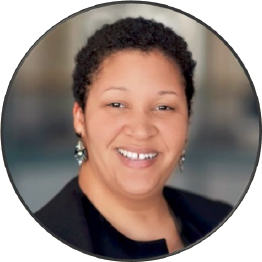
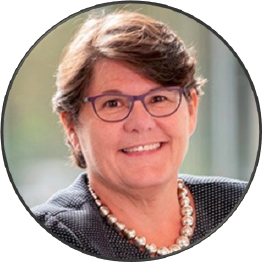
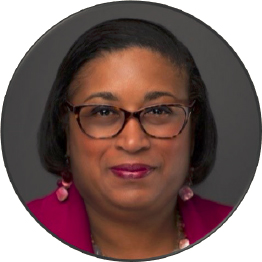
Speakers*
Valerie Churchwell, Office of the Mayor, City of Phoenix, Moderator
Portia Allen Kyle, U.S. Department of Transportation, Office of the Secretary
Mary Ellen Eagan, HMMH
Shannetta Griffin, Federal Aviation Administration
Overview
This session explored the panelists’ views on the following topics: how airports contribute to or exacerbate equity issues as compared with other forms of mobility, the Justice40 Initiative, and establishing a more permanent legacy from the current federal momentum.
Detailed Summary of Panel Discussion
Valerie Churchwell invited the panelists to expand on their respective backgrounds and expertise. Portia Allen Kyle is an attorney by trade, with a background in civil rights. In her role at the U.S. DOT, she is concerned with how transportation functions as a service to the public and is concerned with how to make transportation more equitable to allow people to live more affordably and more autonomously. She shared that the U.S. DOT has equity reflected in its strategic plan for the first time ever, including commitments to empowering communities, stakeholder engagement, and expanding access to services. Mary Ellen Eagan leads a minority-owned
___________________
* Headshots, Row 1: Valerie Churchwell; Row 2: Portia Allen Kyle, Mary Ellen Eagan, Shannetta Griffin.
environmental consulting business. She has observed that many women start their own firms in order to gain access to increased responsibility. Her organization holds more than 70 different certifications at 51 different agencies. It has a staff person who is responsible for keeping all certifications up to date. Shannetta Griffin, an engineer by trade with experience consulting, is now in a leadership position within the federal government. She shared that FAA’s posture is changing with respect to funding and that the agency will be looking more critically at sustainability and environmental compliance issues, especially related to the communities that airports represent.
Churchwell asked the panelists to discuss how airports contribute to or exacerbate equity issues when compared to other forms of mobility.
Kyle identified a few aspects in the aviation context where there are gaps:
- How are impacted communities even conceptualized? The area is frequently geographically too small and does not account for bidirectional influence between airports and regions.
- From the perspective of customer experience, how well do airports account for the range of human experiences (e.g., adults traveling with children, elderly persons, disabled persons, neurodivergent persons, unaccompanied minors, persons who rely on mobility devices, and bereavement travelers)?
- From the design perspective, whose comfort are we designing to accommodate? For example, there are challenges in some airports in securing a place to sit before security (a consequence of antihomeless design) and challenges in securing access to formula, diapers, and menstrual products in airports. The industry needs to use a wider lens in planning and design.
Eagan offered another example. She asserted that the National Environmental Policy Act (NEPA) process in airport planning occurs too late for meaningful stakeholder engagement.13Griffin shared FAA’s intentions to promote intermodalism with Airport Improvement Program (AIP) funding and the Bipartisan Infrastructure Law.
Churchwell asked the panelists to offer some examples of best practices. Kyle shared that the U.S. DOT is rethinking what meaningful public engagement looks like—for example, engaging with communities outside of the project life cycle to provide sustained and deeper outreach. The U.S. DOT will be surveying metropolitan planning organizations (MPOs) to understand how they conceptualize equitable public engagement. The U.S. DOT is working on a best practices guide for community and public engagement, including virtual engagement best practices. Additionally, they have revised Title VI and updated related assurances and guidelines.
Churchwell asked Griffin to expand on the on the Justice40 Initiative and its implications for FAA. Griffin explained that all aspects of FAA’s work will align with
___________________
13 The NEPA process is the planning process that occurs as a result of the National Environmental Policy Act of 1969.
Justice40. The Biden administration is focused on clean infrastructure, resilient infrastructure, energy efficiency, and reducing emissions. Airports often have disadvantaged communities in proximity to them. There is a range of questions to ask about the airport’s impact on communities, tribes, and territories. For example: What is the definition of a disadvantaged community? Where are the communities located? How do airports connect to disadvantaged communities nearby and farther away? What does fair and equitable pay look like? What does airport ground access look like? FAA will also be looking at Title VI compliance as part of the evaluation for AIP grants in 2023.
An audience member asked the panelists how FAA is going to respond and enforce the requirements of DBE regulations and Title VI at the federal level. This person wanted to understand the actions or consequences that the federal government is prepared to pursue if the aviation industry does not meet the requirements of these regulations.
Griffin stated that if the airport sponsor does not comply, then grant assurances allow FAA to ask for resolution, which is primarily handled through the Office of Civil Rights. Her opinion is that they need a better tracking mechanism for enforcement of compliance, and FAA is working on that. Kyle affirmed that upcoming federal messaging regarding Title VI will also be accompanied with technical assistance and resources to ensure that federal funds are not used to perpetuate discrimination. One challenge is that only 32 airports are currently compliant with Title VI. Grant management will likely continue to be challenging, since communities may have layered civil rights impacts across different government agencies. The U.S. DOT’s Office of Civil Rights will have more resources to address these challenges, since it received more funding this year than ever before, but it still has fairly limited staff, which limits the capacity for enforcement.
Two audience members asked Griffin to share her thoughts on FAA’s strategy to permanently incorporate DEIJ into the agency’s work, even as administrations may change. Griffin responded that FAA is working through this, but federal legislation dictates much of what FAA can and cannot do. DEIJ will be incorporated into the master planning process as a component of the Advisory Circular update. Master plan guidance is being updated to include equity and environmental justice, which will make it more permanent. FAA-funded sustainability plans also require equity considerations and community engagement. Kyle listed other federal initiatives that could yield a more permanent legacy:
- Executive Order 13985, Advancing Racial Equity and Support for Underserved Communities Through the Federal Government;
- White House Initiative on Advancing Educational Equity, Excellence, and Economic Opportunity Through Historically Black Colleges and Universities;
- National Strategy on Gender Equity and Equality;
- Justice40 Initiative;
- Recommendations from the Equitable Data Working Group; and
- Government-Wide Strategic Plan to Advance Diversity, Equity, Inclusion, and Accessibility in the Federal Workforce.
Kyle elaborated that the goal is to embed these principles into the regular business of U.S. DOT, since the core work occurs in the deepest parts of the organization.
An audience member asked whether the federal government has considered a national aviation institute or some sort of permanent feature that could help with training over time.
Griffin observed that this would need to be funded through Congress and recommended that, if the industry supports this idea, the American Association of Airport Executives (AAAE), Airports Council International (ACI), and other trade associations communicate their expectations to elected leaders in federal government.
































